4 Surefire Ways to Reduce Unplanned Overtime and Save Your Labor Budget
A system is a method of solving a repeated business issue in a strategic and effortless way.
— Neil Patel, Forbes ‘Top 10 Marketer’ and revenue growth expert
Good systems solve business problems, including unplanned overtime. Does your company have an unplanned overtime problem? If so, you’re not alone.
Unplanned Overtime Kills Labor Budgets
Costly unplanned overtime eats into profits for many U.S. employers. A recent Deloitte study of over 800 companies revealed an average of 31 unplanned overtime hours each week per company.
According to the Bureau of Labor Statistics, the average U.S. employee works about four hours of overtime each week which is roughly 200 hours per year.
Let’s do the math on the BLS numbers. If the average time-and-a-half wage at your company is $20 per hour, that’s $4,000 in annual overtime per employee. If you have 25 employees, it adds up to $100,000. Ouch!
Automated Timekeeping is the Solution
An automated timekeeping system is specialized software that tracks employee time. Employees use a physical time clock, online portal or mobile app to punch in and out for of shifts. The software manages employee authentication, captures punches and tracks hours on ‘virtual’ timecards. Automated timekeeping systems provide time tracking data to payroll to make payroll processing easier and more accurate. Integration with a payroll system allows a time and attendance system to provide accurate time and attendance data to payroll without any manual intervention.
Automated timekeeping solves a whole bunchwide range of business problems, but we will focus on just one: budget-killing unplanned overtime.
Let’s dive into 5 surefire ways automated timekeeping reduces unplanned overtime to save your labor budget.
1. Automated timekeeping gives you an accurate picture of employee work hours.
Manual timekeeping systems like spreadsheets and paper timecards are wildly inaccurate. The American Payroll Association estimates that the rate of human error in timecard preparation is between 1% and 8%. Employees can’t recall shift start and end times after the fact and often round up in their favor. It’s human nature. Or they make math errors when tallying hours.
Employees aren’t the only ones who make errors. Managers make mistakes when entering timecard data into spreadsheets or filling in missed punches. Multiple studies, including one by PriceWaterhouseCoopers reveals an average spreadsheet error rate of 90% or more.
Bottom line? You can’t reduce unplanned overtime until you have accurate hours data of hours.
1. Manager alerts keep you informed when employees reach overtime status so you can stay on top of it.
Imagine if a supervisor received an alert when a team member was nearing the end of straight-time hours. The manager could quickly look at the time system app on their mobile phone and see which employees were under 40 weekly hours.
Would overtime warnings help your managers? Many companies that use automated timekeeping with manager alerts find that pending overtime warnings help supervisors make staffing adjustments before time-and-a-half kicks in. Consider also that a manager could use a mobile timekeeping app whether or not he/she was at the office.
Just as importantly, the warnings would work just as well for mobile or remote employees. Certainly, manager alerts are especially useful for geographically dispersed teams.
2. Punch lockout prohibits employees from clocking in too early.
Schedule enforcement is critical for large workgroups. If you aren’t watching, some employees will punch in a few minutes early. It happens to every employer. The unauthorized work time compounds, eventually adding mountains of unplanned overtime to your payroll. Full-time employees who punch in early can easily move into overtime by week’s’ end.
An intelligent clock with punch lockout can save your company a lot of money. Intelligent clocks sync to employee schedules. They have schedule enforcement features including punch lockout. Punch lockout prohibits an employee from clocking in before their shift starts. (Remember, though, you can’t require an employee to work off the clock.)
3. Scheduling rules notify you when you try to schedule an employee for overtime.
This software feature prevents overtime at the source: employee shift planning. Automated time and attendance systems have configurable rules to guide schedules. When a manager tries to schedule an employee past 40 hours, the scheduling tool can send an overtime warning. This allows the manager to schedule another employee who hasn’t maxed out their straight-time hours.
This is especially helpful for large teams and shifts of varying lengths. Managers don’t have to repeatedly tally hours for each employee in various scheduling scenarios because the system tracks it automatically. The software can also suggest employees who are available and not at risk of overtime.
If business demand requires overtime, the manager can make a conscious decision about how to allocate it–not allow it to accrue unknowingly through uninformed shift planning.
In summary, prevent payroll bloat by matching employee scheduling to demand and distributing hours evenly among team members.
Sources
https://www.amtrakoig.gov/sites/default/files/reports/OIG-MAR-2015-011 REDACTED - REV 10212015.pdf
https://www.eane.org/app/uploads/2021/01/Deloitte-Study_Paylocity-Exec-Sum.pdf
https://www.bls.gov/news.release/empsit.t23.htm
https://www.pwc.com.cy/en/Consulting/assets/spreadsheet-mistakes-issue-1-march-2016.pdf
https://www.americanpayroll.org/
THIS ARTICLE IS FOR GENERAL INFORMATION PURPOSES ONLY. BUSINESS FINANCIALS, INC. (BFI) IS NOT ISSUING SPECIFIC FINANCIAL OR TAX ADVICE. PLEASE CONSULT WITH A LICENSED FINANCIAL PLANNER, TAX ATTORNEY, OR ACCOUNTANT FOR ASSISTANCE WITH YOUR SPECIFIC SITUATION. IF YOU NEED HELP, WE INVITE YOU TO CONTACT US. WE WILL BE HAPPY TO MAKE RECOMMENDATIONS OR REFER YOU TO A LICENSED PROVIDER WHO MAY BE BEST SUITED FOR YOUR SITUATION.





